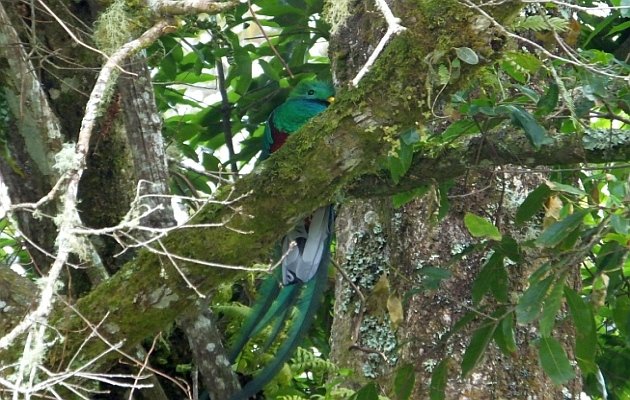
Costa Rica is a tropical country but it doesn’t have to be hot. Crunched and uplifted by plate tectonics, its also a mountainous, volcanic nation with land heading thousands of feet into the near atmosphere. This uplift, this natural reaching towards the stars and the outer deep blue also makes it a place of cool, temperate weather.
The locals call it “cold”. When you get used to living in warm Costa Rica, it can be tempting to follow suit and refer to 50 temperature fall weather as “cold”. But the mark left by the memories of the north’s freezing grip are too fierce to be forgotten. This is common with life-threatening situations and expected; any ancient ancestors who would have not paid heed to close calls would have likely been quickly and savagely selected from the gene pool (just trying to pet the Short-faced Bear again…) . And so I recall the numb feet, the knowledge of knowing about the importance of staying sufficiently warm and the race against time for finding shelter when the winds howl turned into an invisible attack on inner warmth.
To be honest, I shouldn’t downplay the lower temperatures of Costa Rica’s high elevations. The mountain dynamic has killed people; quite a few in past times when folks who were dressed and adapted to warmer temperatures tried to hike over the tall mountains and became lost or were caught unawares and unprepared for a hypothermic night. It is different now, knowledge facilitates preparation and cars quickly shuttle travelers through beautiful scenery. But stay overnight and you will be reminded of the cold, enough to be reminded that Costa Rica being tropical doesn’t always equate this nation with being a hot place for tee-shirts and shorts.
Last week, I thought of that while listening to Dusky Nightjars give their Whip-poor-will like calls on the Providencia Road. The night was understandably cool, not quite freezing but cool enough to warrant a sweater and jacket at this high elevation birding hotspot. Passing through the high oak dominated rainforests of Quetzal National Park, this road can also turn up Unspotted Saw-whet Owls and other species of the night but is much more birdy during the day.
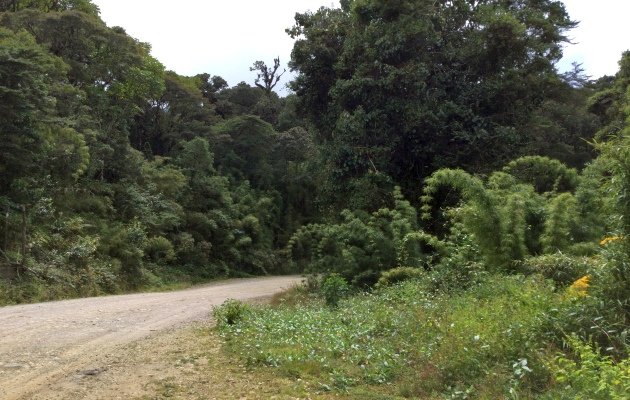
At its 3,000 meter start, treeline habitats host Sooty Thrushes and other endemic birds of the high places, it is especially good for Timberline Wren.
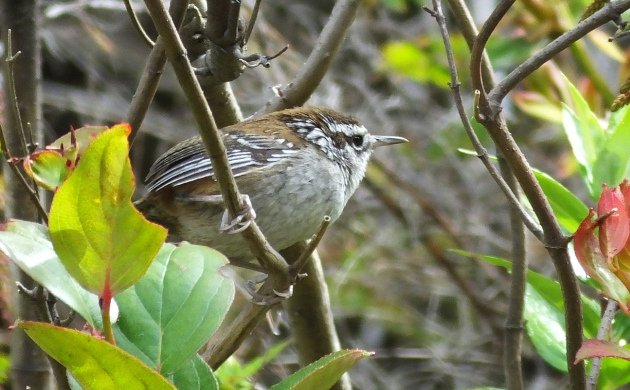
A bird of treeline and paramo habitats in Costa Rica and Panama, this wren is a main target for visiting birders. Its also one of the many birds on the climate change elevator that leads straight to extinction but I will leave that subject for another time. The group I was guiding saw and heard a few pairs of these special birds along with Black-capped Flycatcher, Black-cheeked Warblers, Long-tailed Silky-Flycatchers, and so many other wonderful birds of the cool, high elevations.
Even if you weren’t birding, the tall, old trees and bamboo understory would make for a beautiful bike ride or hike along Providencia Road. However, given the flocks of Barred Parakeets and many other birds that live in forests, you really should be birding. Stopping and walking produced most of the expected species, birds like Talamanca Hummingbird, Fiery-throated Hummingbirds, Large-footed Finches scratching the leaf litter and Yellow-thighed Finches rummaging in the vines.
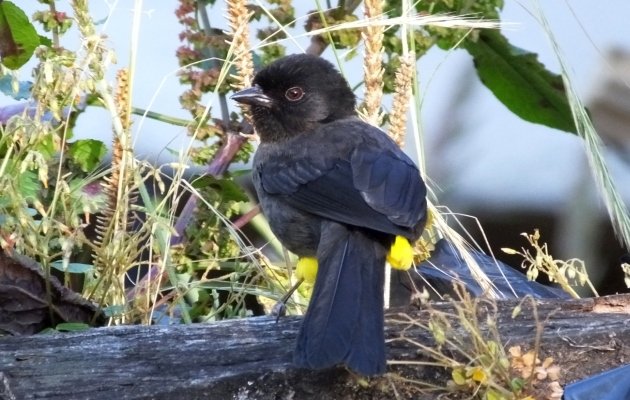
These smart looking birds are tropical sparrows.
Nightingale-thrushes sing from the undergrowth, their voices occasionally joined by the less melodic but more insistent master skulker Silvery-fronted Tapaculos and Wrenthrush.
Further down, beautiful White-winged Tanagers are possible along with foliage-gleaners and other birds of the subtropical zone. Go to the end of the road at Piedra de Providencia and tanagers become more common, other birds of middle elevations appear, we had a dozen hummingbird species.
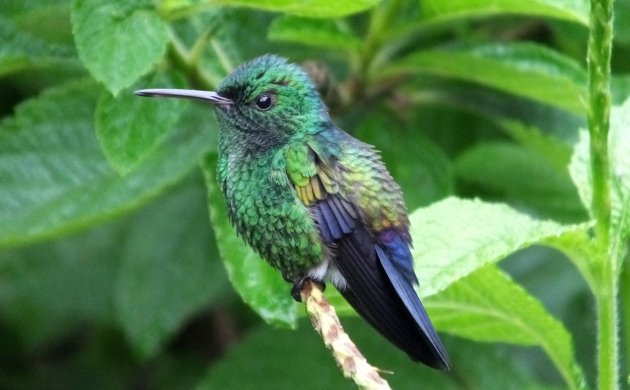
Blue-vented Hummingbird was one of them.
On an unsettling note, local guide Johan told us that Yellow-throated Toucans have been seen. Ironically, this sure and unwelcome sign of climate change is not the best of situations because the large toucan will likely compete with and prey on the nestlings of the Resplendent Quetzal.
As for quetzals, this is still a very good area for them, we saw and heard some on the main road through the aptly named Quetzal National Park and on a side trail to a farm where planted fruiting trees attract these spectacular birds. The owner is part of a program associated with Tami Lodge, whereby guests visit the farm to see the sacred bird of the Mayans. Ironically, since the birding was so damn good on the trail in, our group arrived too late to see the early morning quetzal show!
The owner said that five had been there, chasing each other around (!). At least we were still entertained by beautiful Yellow-bellied Siskins perched nearly within arms reach, seeing lots of other birds, and enjoying the fantastic scenery.
Nor could we complain because we also watched a few quetzals play hide and seek inside the forest and had close looks at one on the main road. A quetzal is always a highlight but visit Providencia and you can’t help but see lots of other birds too. If you visit, just remember to bring a jacket and other self insulating gear to stay warm during a 50 degree or lower night. Oh and you do want to go out at night; the stars look extra bright when you whistle for Unspotted Saw-whet Owls and share quiet mountain roads with the calls of Dusky Nightjars.














Leave a Comment